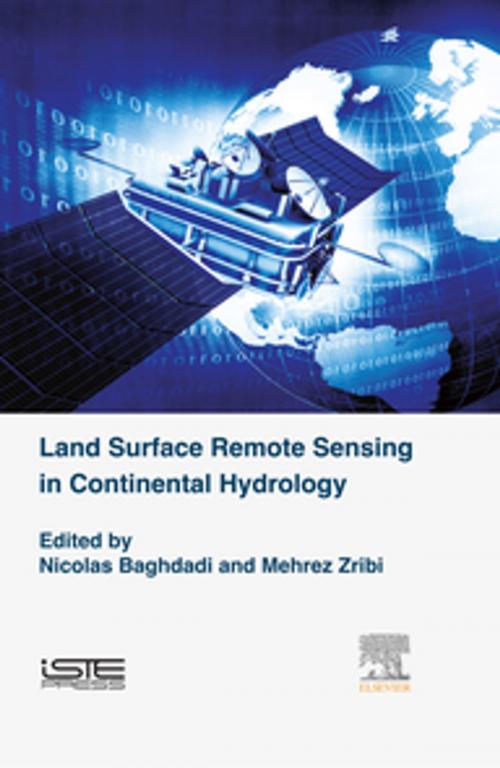Land Surface Remote Sensing in Continental Hydrology
Nonfiction, Science & Nature, Technology, Remote Sensing, Science, Earth Sciences| Author: | Nicolas Baghdadi, Mehrez Zribi | ISBN: | 9780081011812 |
| Publisher: | Elsevier Science | Publication: | September 19, 2016 |
| Imprint: | ISTE Press - Elsevier | Language: | English |
| Author: | Nicolas Baghdadi, Mehrez Zribi |
| ISBN: | 9780081011812 |
| Publisher: | Elsevier Science |
| Publication: | September 19, 2016 |
| Imprint: | ISTE Press - Elsevier |
| Language: | English |
The continental hydrological cycle is one of the least understood components of the climate system. The understanding of the different processes involved is important in the fields of hydrology and meteorology. In this volume the main applications for continental hydrology are presented, including the characterization of the states of continental surfaces (water state, snow cover, etc.) using active and passive remote sensing, monitoring the Antarctic ice sheet and land water surface heights using radar altimetry, the characterization of redistributions of water masses using the GRACE mission, the potential of GNSS-R technology in hydrology, and remote sensing data assimilation in hydrological models. This book, part of a set of six volumes, has been produced by scientists who are internationally renowned in their fields. It is addressed to students (engineers, Masters, PhD) , engineers and scientists, specialists in remote sensing applied to hydrology. Through this pedagogical work, the authors contribute to breaking down the barriers that hinder the use of Earth observation data.
- Provides clear and concise descriptions of modern remote sensing methods
- Explores the most current remote sensing techniques with physical aspects of the measurement (theory) and their applications
- Provides chapters on physical principles, measurement, and data processing for each technique described
- Describes optical remote sensing technology, including a description of acquisition systems and measurement corrections to be made
The continental hydrological cycle is one of the least understood components of the climate system. The understanding of the different processes involved is important in the fields of hydrology and meteorology. In this volume the main applications for continental hydrology are presented, including the characterization of the states of continental surfaces (water state, snow cover, etc.) using active and passive remote sensing, monitoring the Antarctic ice sheet and land water surface heights using radar altimetry, the characterization of redistributions of water masses using the GRACE mission, the potential of GNSS-R technology in hydrology, and remote sensing data assimilation in hydrological models. This book, part of a set of six volumes, has been produced by scientists who are internationally renowned in their fields. It is addressed to students (engineers, Masters, PhD) , engineers and scientists, specialists in remote sensing applied to hydrology. Through this pedagogical work, the authors contribute to breaking down the barriers that hinder the use of Earth observation data.
- Provides clear and concise descriptions of modern remote sensing methods
- Explores the most current remote sensing techniques with physical aspects of the measurement (theory) and their applications
- Provides chapters on physical principles, measurement, and data processing for each technique described
- Describes optical remote sensing technology, including a description of acquisition systems and measurement corrections to be made















